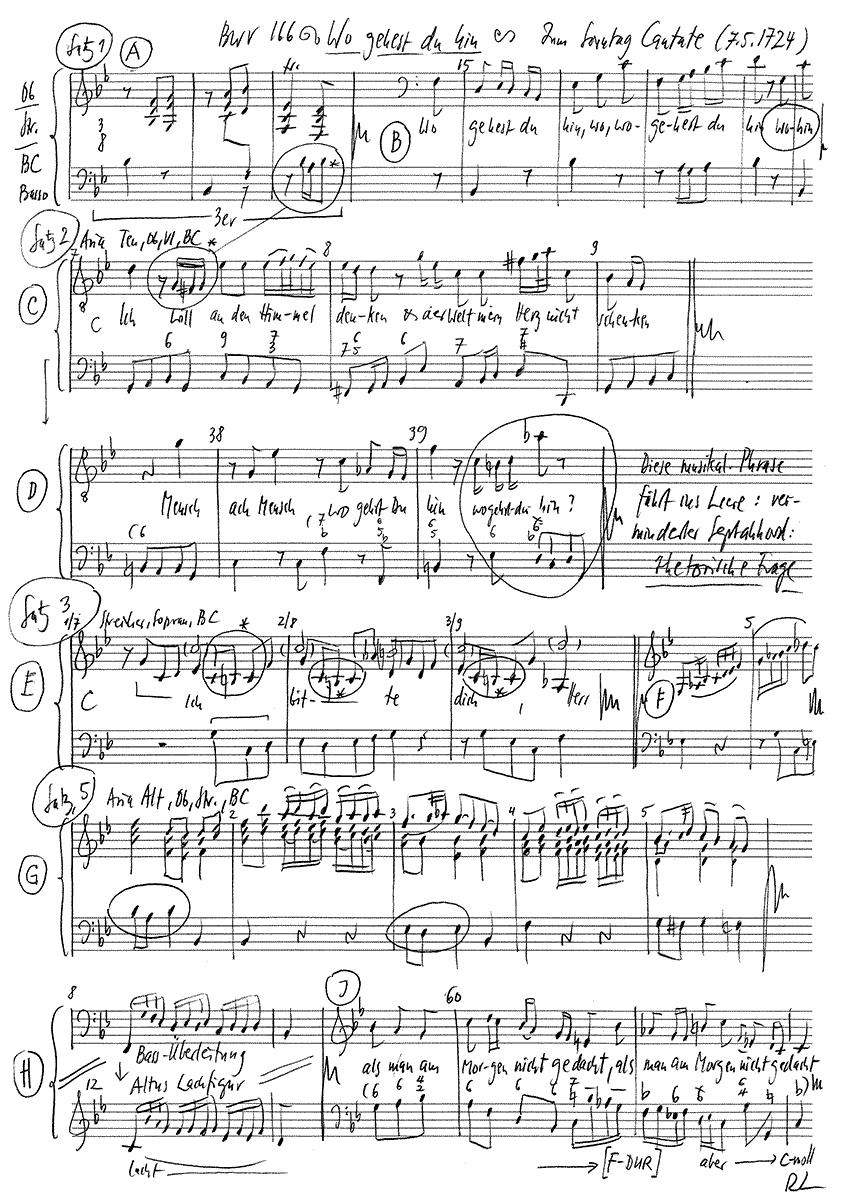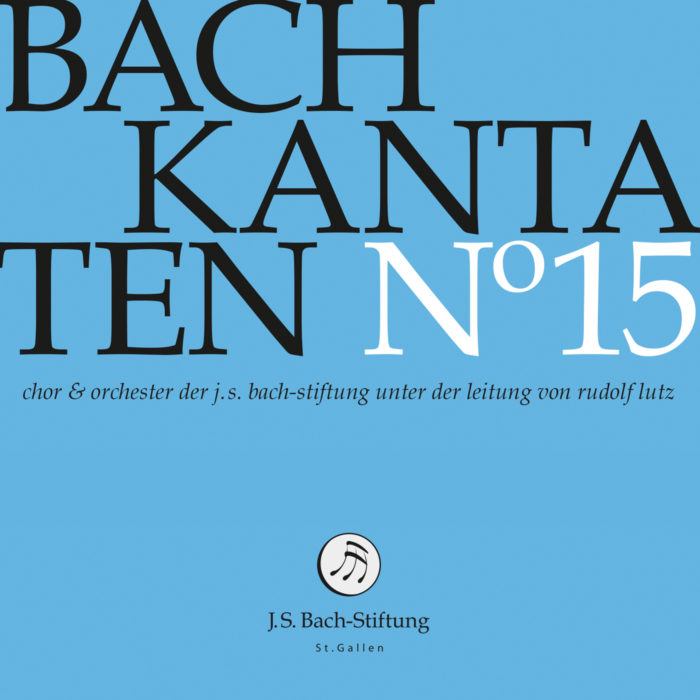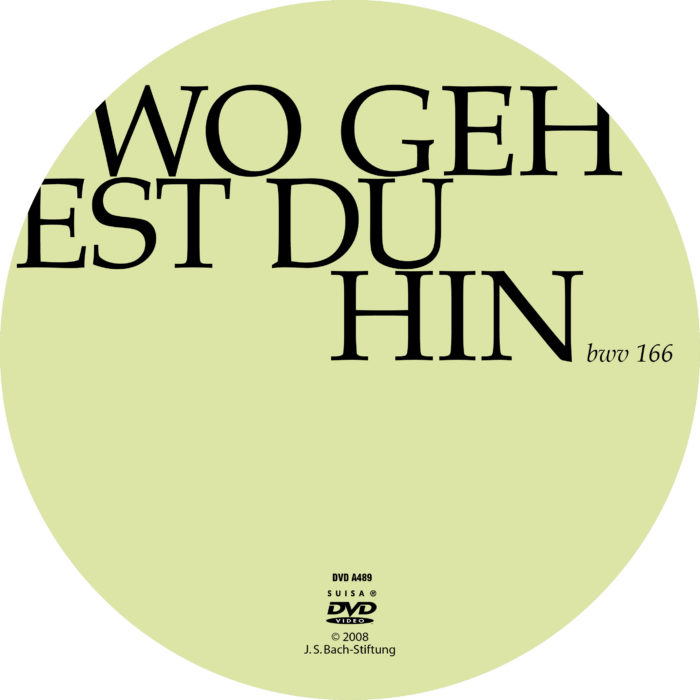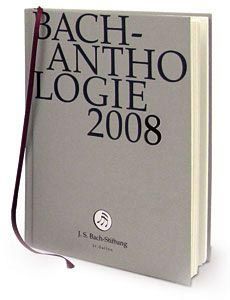Wo gehest Du hin
BWV 166 // For Cantate (Fourth Sunday after Easter)
(Where to dost thou go?) for soprano, alto, tenor and bass, oboe, strings and continuo.
“Wo gehest du hin?” (Where to dost thou go?) – First performed on 7 May 1724, cantata BWV 166 begins with a Bible quote of a mere four words that are at once concise and enigmatic, and difficult to interpret musically.
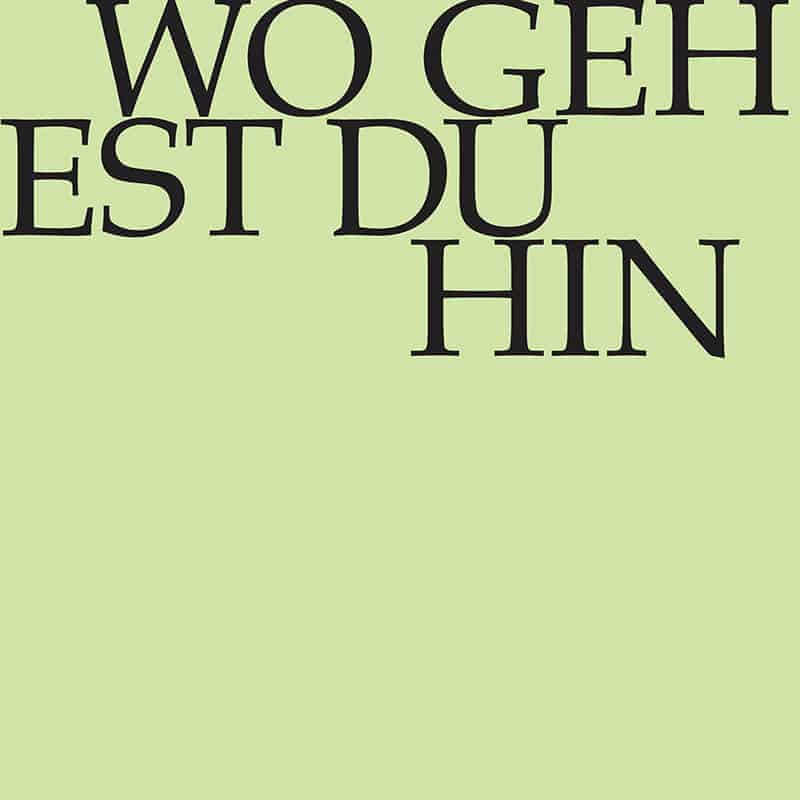
Would you like to enjoy our videos ad-free? Subscribe to YouTube Premium now...
Workshop
Reflective lecture
Choir
Soprano
Guro Hjemli
Orchestra
Conductor
Rudolf Lutz
Violin
Michi Gaigg (special Guest, Leiterin L‘Orfeo Barockorchester), Renate Steinmann
Viola
Susanna Hefti
Violoncello
Martin Zeller
Violone
Iris Finkbeiner
Oboe
Luise Baumgartl
Organ
Rudolf Lutz
Musical director & conductor
Rudolf Lutz
Workshop
Participants
Karl Graf, Rudolf Lutz
Reflective lecture
Speaker
Katharina Hoby Peter
Recording & editing
Recording date
04/18/2008
Recording location
Trogen
Sound engineer
Stefan Ritzenthaler
Director
Meinrad Keel
Production manager
Johannes Widmer
Production
GALLUS MEDIA AG, Switzerland
Producer
J.S. Bach Foundation of St. Gallen, Switzerland
Librettist
Text No. 1
Quote from John 16:5
Text No. 2, 4, 5
Poet unknown
Text No. 3
Bartholomäus Ringwaldt, 1582
Text No. 6
Ämilie Julyane Gräfin von Schwarzburg–Rudolfstadt, 1688
First performance
Cantate,
7 May 1724
In-depth analysis
For the introductory movement, Bach chose a setting characterised by fragmented gestures and short-winded, three-bar motives that evoke an image of disoriented searching, but nonetheless maintain a noble and serious tone. This is no banal enquiry as to the way, but a stern, fatherly admonition to remain on the right path.
The idea behind this interpretation is not revealed until the following aria, in which the librettist reframes the query “Where to dost thou go” – a question the disciples have failed to pose to Jesus, despite his imminent ascent to heaven – as an existential matter that humans must examine from a moral and salvation-historical perspective, and resolve with conviction: “I’ll be unto heaven mindful, nor the world my heart surrender”. The resulting double meaning contrasts the disorientation of the first movement with the focused, introspective nature of the heavenly aria, transforming the initially diffuse figure of “Where to dost thou go?”, into a loving and clear message. Because the surviving violin II part of the cantata only indicates a doubling of the solo part, there is much material missing for a complete realisation of the movement. Fortunately, however, this problem can be solved at least for the A section by referring to the organ trio BWV 584 (published posthumously in 1842), which is probably an arrangement created by one of Bach’s pupils based on an early version of the aria and which fully notates both obbligato voices. The transparent, focused character of the music and its sensitivity to the textual themes of human intentions and life’s uncomfortable truths are indicative of Bach’s Weimar period, especially considering that the cantata text originates from Bach’s librettist of that time, Salomo Franck.
The following chorale is set for soprano, unison strings and basso continuo, thus matching the form of the compositions later reworked for organ as the “Schübler chorales”. Taken from “Herr Jesu Christ, ich weiß gar wohl”, a hymn of repentance, the text “I pray to you, Lord Jesus Christ” stresses the need to practise lifelong denial of worldly pleasures, as expressed in the preceding aria – a concept that is manifested in the motivic straightjacket of the music. This movement is followed by a short but dramatic recitative that interprets the “subsiding of the rain-sent waters” and the “fading of many hues” as symbols of the transience and inconstancy of human existence.
Listeners now expecting music of courage and inspiration to ensue, will, however, be met with disappointment. Rather, the bright, false gestures of the alto aria, set in the style of a courtly minuet, proffer a drastic caricature of humankind’s misbegotten trust in fleeting fortune. Although the dry, imperious tone of the solo part suggests the futility of all words of caution, the descending orchestral garlands of the middle section still fervently stress the urgency of repentance: between dawn and dusk, the descent to hell can abruptly draw nigh…
This serious sentiment is further sustained in the closing chorale as a veritable memento mori: “Who knows how near to me mine end is?” Indeed, it takes no more than the poignant words of the hymn by Ämilie Juliane von Schwarzburg-Rudolstadt to illuminate the true dimensions of mortality, and to breathe haunting profundity into the introductory question of “Where to dost thou go?”
Libretto
1. Arie (Bass)
Wo gehest du hin?
2. Arie (Tenor)
Ich will an den Himmel denken
und der Welt mein Herz nicht schenken.
Denn ich gehe oder stehe,
so liegt mir die Frag im Sinn:
Mensch, ach Mensch, wo gehst du hin?
3. Choral (Sopran)
Ich bitte dich, Herr Jesu Christ,
halt mich bei den Gedanken
und laß mich ja zu keiner Frist
von dieser Meinung wanken,
sondern dabei verharren fest,
bis daß die Seel aus ihrem Nest
wird in den Himmel kommen.
4. Rezitativ (Bass)
Gleichwie die Regenwasser bald verfließen
und manche Farben leicht verschießen,
so geht es auch der Freude in der Welt,
auf welche mancher Mensch
so viele Stücken hält;
denn ob man gleich zuweilen sieht,
daß sein gewünschtes Glücke blüht,
so kann doch wohl in besten Tagen
ganz unvermut’ die letzte Stunde schlagen.
5. Arie (Alt)
Man nehme sich in acht,
wenn das Gelücke lacht.
Denn es kann leicht auf Erden
vor abends anders werden,
als man am Morgen nicht gedacht.
6. Choral
Wer weiß, wie nahe mir mein Ende!
Hin geht die Zeit, her kommt der Tod;
ach wie geschwinde und behende
kann kommen meine Todesnot.
Mein Gott, ich bitt durch Christi Blut:
Mach’s nur mit meinem Ende gut!



